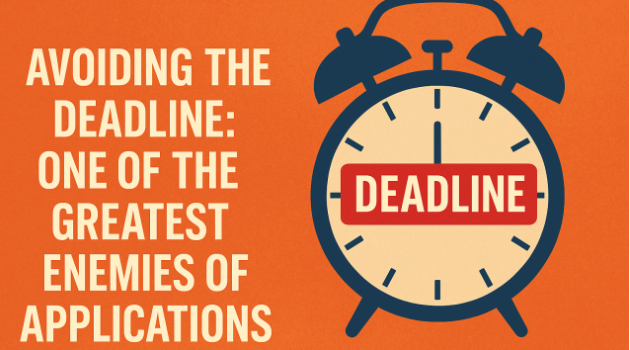Liderança | Empreendedorismo | Gestão | Planeamento | Estratégia | Escrita para Financiamento | Especialista em financiamento para desenvolvimento | Orador internacional
23 de setembro de 2025
In the world of non-profits, where every opportunity can transform the scope of impact on communities, one of the most silent yet damaging adversaries is the deadline. It is not simply a date marked on a calendar, but a decisive barrier between organisations and the resources they need to thrive. Too often, applications are weakened or entirely abandoned because time ran out. The issue is not the existence of deadlines themselves, but the lack of effective planning that turns them into stumbling blocks rather than milestones.
Research has shown that preparing a strong grant proposal requires far more time than most organisations anticipate. A survey conducted by Instrumentl found that about 40% of respondents spend between ten and twenty hours on a single application, with another 15% investing more than thirty hours, and complex government proposals can demand over one hundred hours of work. This means that any organisation treating the process as something that can be rushed at the last minute is not only underestimating the effort required, but also increasing the likelihood of failure. The opportunity cost of such underestimation is enormous. Some sources suggest that up to seven out of ten non-profits fail before even submitting a grant application, often because of poor preparation, limited staff capacity, or missing essential documents. If this figure is even partly accurate, it reveals the scale of opportunities lost, with countless projects never reaching the review stage simply due to poor time management.
The consequences are not only theoretical. In one striking case, three organisations in Washington, D.C. missed a submission deadline and thereby forfeited 3.75 million US dollars in federal funding. That single lapse directly affected nineteen school reading centres, demonstrating how missed deadlines translate into tangible harm for the communities non-profits are meant to serve. Deadlines, therefore, should not be seen as administrative inconveniences but as critical factors that must shape the entire process of planning, writing, and submitting applications.
The reasons why organisations fall short of deadlines are diverse. Procrastination is the most obvious explanation, but beneath it lies a mix of structural and organisational challenges. Non-profits often operate with limited human resources, where staff juggle multiple responsibilities and grant writing becomes an afterthought rather than a dedicated priority. Others underestimate the complexity of requirements, assuming that a “simple” application can be finalised quickly, only to discover that financial reports, letters of support, and evaluation frameworks take longer than expected to prepare. Bureaucratic delays within the organisation, unclear division of tasks, and late engagement of partners further increase the risk of missing the cut-off point.
What turns deadlines from enemies into allies is the discipline of planning. Strong organisations embed forward-looking processes into their application work. They begin preparations well before the submission window opens, they map out timelines that include space for revisions and approvals, and they ensure that responsibilities are clearly assigned rather than vaguely shared. By treating deadlines as a structural element of project design, they transform pressure into direction. Such discipline not only prevents missed opportunities, but also improves the quality of applications, as the time saved from last-minute crises can be invested into stronger narratives, clearer budgets, and better evidence of impact.
The lesson is clear: in the non-profit sector, every lost application is more than a missed chance at funding. It represents diminished services, reduced community support, and opportunities for change that never materialise. Deadlines are not to be feared, but they must be respected. The organisations that thrive are those that see them not as final obstacles, but as part of the roadmap guiding them towards sustainable growth and greater social impact. Avoiding the deadline, through careful anticipation and effective planning, is therefore not just a matter of efficiency. It is one of survival.
References
Instrumentl. (n.d.). How long does it take to write a grant? Retrieved from Instrumentl blog: https://www.instrumentl.com/blog/how-long-to-find-grants
Professional Grant Writer. (n.d.). How long does it take to write a grant? Retrieved from: https://www.professionalgrantwriter.org/how-long-does-it-take-to-write-a-grant
Queen Israel. (n.d.). Why 7 Out of 10 Nonprofits Miss Out on Funding Before They Even Apply. LinkedIn. Retrieved from: https://www.linkedin.com/pulse/why-7-out-10-nonprofits-miss-funding-before-even-apply-queen-israel-m2qgf
Keller-Ferguson, G. (2019, April 9). Two Reasons Grant Deadlines are Missed (Other Than Procrastination). KFan Nonprofit. Retrieved from: https://kfanonprofit.com/blogs/blog/two-reasons-grant-deadlines-are-missed-other-than-procrastination
Allied Grant Writers. (2024). Average Hours for Grant Writing: What you need to know. Retrieved from: https://www.alliedgrantwriters.com/average-hours-for-grant-writing


